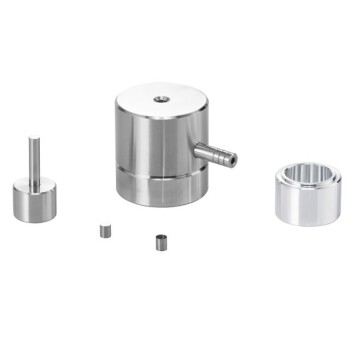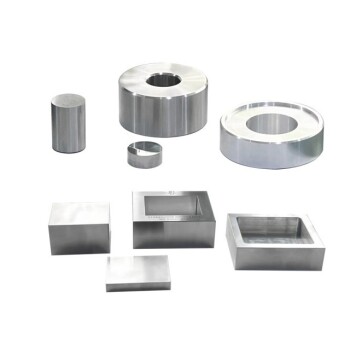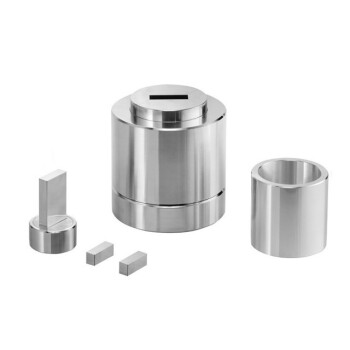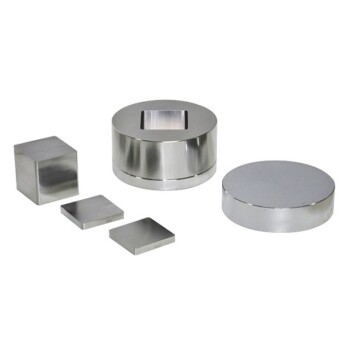In short, the dominant trends in modern lab pellet press technology are automation, enhanced precision engineering, and the use of advanced materials. These advancements are moving presses from standalone manual tools to integrated, intelligent components of the modern laboratory, designed for higher efficiency, superior sample uniformity, and increased operational reliability.
The evolution of lab presses is not just about building a stronger machine. It's about fundamentally rethinking the sample preparation workflow to prioritize data integrity, operator efficiency, and system-wide integration from the very first step.
The Drive for Efficiency: Automation and Digital Integration
The most significant shift in pellet press technology is the move away from manual operation toward automated systems. This trend addresses the core laboratory goals of increasing throughput and reducing human error.
From Manual Labor to Automated Workflows
Automated presses manage the entire compression cycle, from applying pressure to releasing the finished pellet. This eliminates operator-to-operator variability, ensuring that every sample is prepared under identical conditions, which is critical for analytical accuracy.
The Impact of Digital Connectivity
Modern presses are increasingly equipped with digital controls and connectivity. This allows for precise programming of pressure cycles, data logging for traceability, and integration with Laboratory Information Management Systems (LIMS), turning the press into a communicating node in your lab's data ecosystem.
Seamless Integration with Other Instruments
The goal is a "sample-in, data-out" workflow. Presses are now designed to integrate seamlessly with other equipment, such as grinders and XRF or FTIR spectrometers. This creates a cohesive analytical chain that minimizes manual handling and potential contamination.
The Pursuit of the Perfect Pellet: Precision and Materials
Beyond automation, the physical engineering of the press itself is undergoing significant refinement. The focus is on creating a perfectly uniform pellet every time, as this directly impacts the quality of subsequent analytical results.
Advancements in Precision Engineering
Engineers are focused on achieving perfectly uniform pressure distribution across the sample. This results in pellets with consistent density and a flawless surface, free of cracks or imperfections, which is essential for techniques like XRF analysis.
Superior Materials for Dies and Components
The use of advanced materials, such as specialized hardened steels and tungsten carbide for dies, is now standard. These materials resist wear, reduce sample contamination, and significantly extend the operational life of critical components, ensuring long-term performance.
The Rise of Modular and Compact Designs
Recognizing that lab space is a premium and needs can vary, manufacturers are offering more compact and modular presses. Modular designs allow labs to customize a press for specific applications, while smaller footprints make it easier to place the equipment exactly where it's needed in the workflow.
Understanding the Operational Realities
While new technology offers significant advantages, its effectiveness is directly tied to proper operation and maintenance. Ignoring these fundamentals can undermine the benefits of any advanced system.
The Critical Role of Regular Maintenance
Even the most advanced press requires diligent upkeep. Regular cleaning of moving parts, proper lubrication, and periodic inspection for wear or hydraulic leaks are non-negotiable for ensuring longevity and performance.
The Importance of Force Calibration
The accuracy of your results depends on the accuracy of the applied force. Force gauges must be calibrated regularly to ensure the press is delivering the programmed pressure. An uncalibrated press negates the benefits of a precision-engineered system.
Sustainability and Safety Features
Emerging designs often incorporate energy-efficient motors and hydraulic systems, reducing operational costs and environmental impact. Standard safety features, such as emergency stop buttons and protective shielding, are essential for protecting operators.
Making the Right Choice for Your Goal
Selecting the right pellet press requires matching the technology to your laboratory's primary objective.
- If your primary focus is high throughput and repeatability: Prioritize a fully automated press with robust digital integration capabilities to connect with your LIMS.
- If your primary focus is material science or R&D: Invest in a press known for its precision engineering and options for advanced die materials to ensure maximum sample integrity.
- If your primary focus is versatility in a space-constrained lab: Look for a compact, modular press design that can be adapted to various sample types and sizes without occupying a large footprint.
Understanding these trends empowers you to choose a tool that not only prepares samples but actively enhances the quality and efficiency of your entire analytical process.
Summary Table:
| Trend | Key Features | Benefits |
|---|---|---|
| Automation & Digital Integration | Automated workflows, digital controls, LIMS connectivity | Higher throughput, reduced human error, better traceability |
| Precision Engineering | Uniform pressure distribution, consistent pellet quality | Superior sample integrity, flawless surfaces for analysis |
| Advanced Materials | Hardened steels, tungsten carbide dies | Extended component life, reduced contamination |
| Modular & Compact Designs | Customizable, space-saving options | Versatility in applications, efficient lab space use |
Upgrade your lab with KINTEK's advanced lab press machines, including automatic lab presses, isostatic presses, and heated lab presses. Our solutions deliver enhanced efficiency, precision, and reliability for your sample preparation needs. Contact us today to discuss how we can support your laboratory goals!
Visual Guide
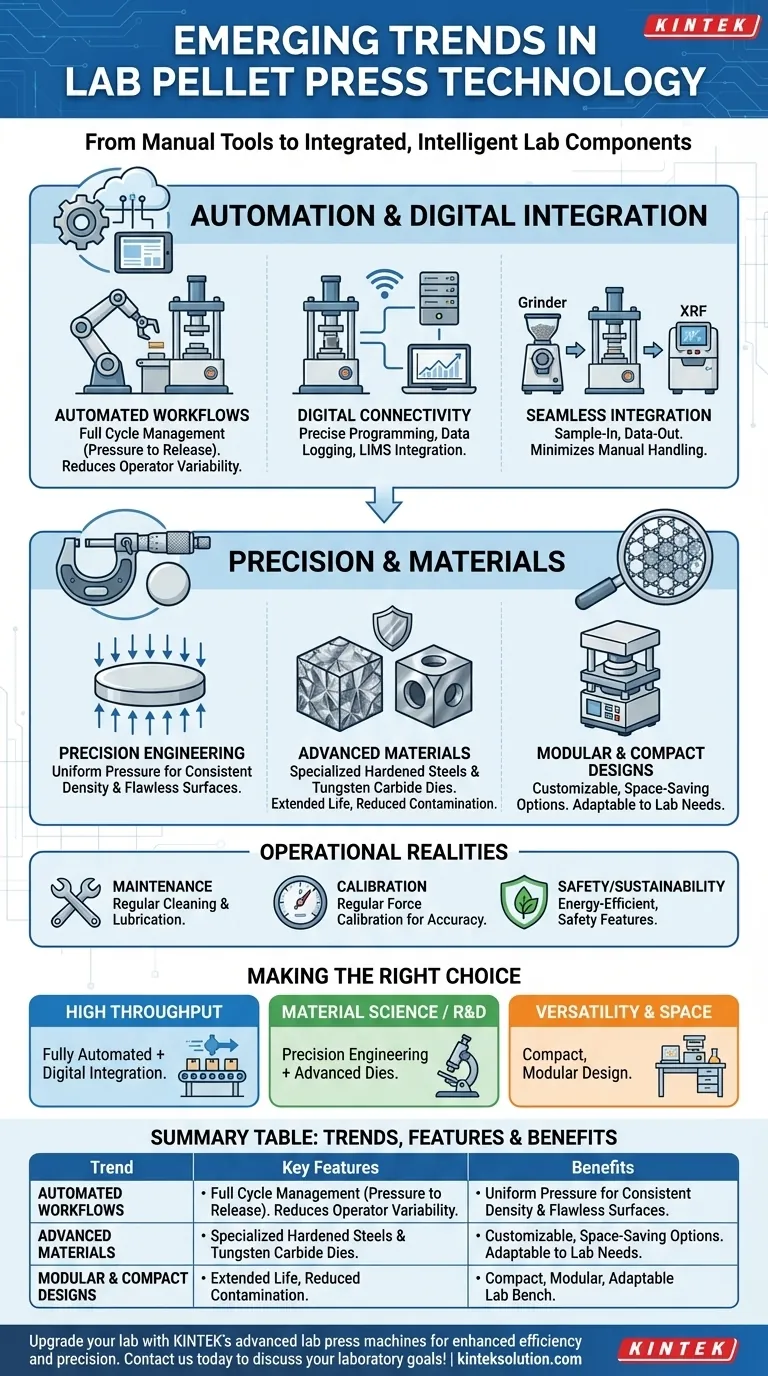
Related Products
- Laboratory Hydraulic Press Lab Pellet Press Button Battery Press
- Laboratory Hydraulic Press 2T Lab Pellet Press for KBR FTIR
- Laboratory Hydraulic Split Electric Lab Pellet Press
- Manual Heated Hydraulic Lab Press with Integrated Hot Plates Hydraulic Press Machine
- Automatic High Temperature Heated Hydraulic Press Machine with Heated Plates for Lab
People Also Ask
- What are the advantages of using a hydraulic mini press? Achieve Precise Force in a Compact Lab Tool
- How does a hydraulic mini press compare to a hand press for sample preparation? Achieve Consistent, High-Quality Results
- How do hydraulic pellet presses contribute to material testing and research? Unlock Precision in Sample Prep and Simulation
- How are geological samples prepared for XRF analysis? Ensure Accurate Results with Proper Pellet Prep
- How does a hydraulic press aid in XRF spectroscopy? Achieve Accurate Elemental Analysis with Reliable Sample Prep












